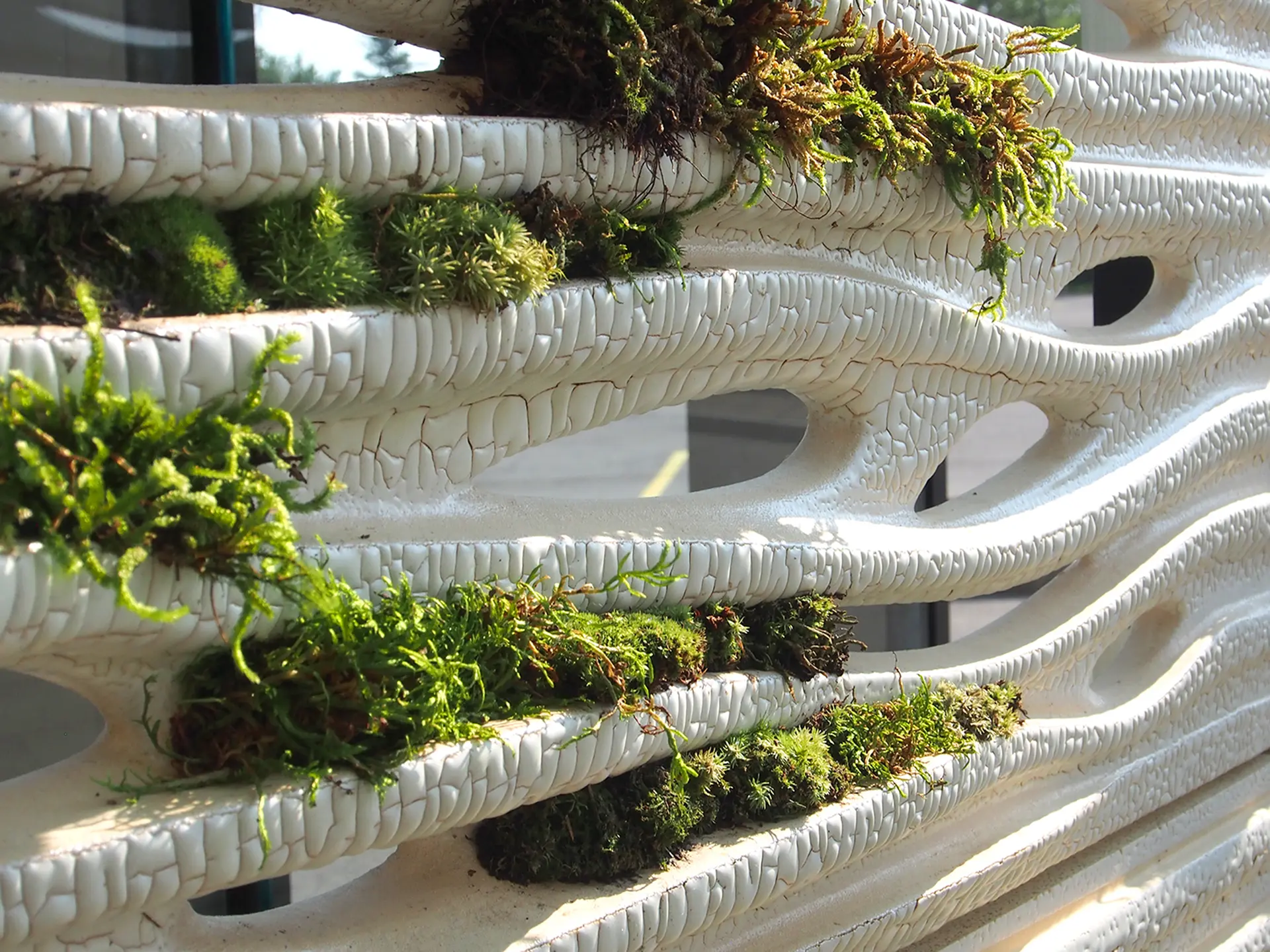Creating a home for climate-resilient moss

Thriving without soil and roots, moss defies convention by flourishing on surfaces where other plants struggle.
Utilizing the power of moss has the potential to significantly contribute to creating resilient cities. It has one of the best air cleaning and oxygenating capabilities of any plant; can absorb and metabolize fine dust, converting particles into natural and harmless biomass. With an ability to thrive in almost any climate or temperature, moss is incredibly adaptive and an important component of many ecosystems. Often, it’s the first to colonize desolate areas, playing a pivotal role in the development on new ecosystems.
At this year’s Architectural Ceramic Assemblies Workshop, our New York team considered the potential of using moss for vertical greening in terracotta panels. With its innate hardy qualities, exceptional carbon sequestration, and water retention abilities, the often-overlooked plant is an ideal candidate for use in architectural façade design.
The design team constructed a large prototype: a terracotta screen curtain wall system crafted to be the perfect canvas for moss to thrive. The design embraces the plant’s organic growth pattern, found in natural substrates such as tree bark and rock formations.
Leveraging Midjourney’s text-to-image AI capabilities, the team created unique textural images as initial inspiration. The undulating texture was translated into detailed Subdivision Surface Modeling using Rhino, resulting in 12 by 30-inch rectangular terracotta modules with varying porosity and depth.
After several revisions, four modules were created with features designed to facilitate moss growth. The terracotta surface serves as a substrate, while sculpted openings and elegant ribs on an unglazed surface provide ideal spaces for moss to flourish. The team experimented with a crackle glazing technique to support moss growth across the textured ceramic canvas. Additionally, the unglazed areas on the front panel, along with the openings, enable moss to spread from the front to the back of the panels, where shaded and unglazed conditions encourage further growth.
During the 2023 ACAW, eight design teams, including Henning Larsen, gathered to collaborate in creating façade prototypes using architectural terracotta.
The event was hosted by Boston Valley Terra Cotta partnered with University of Buffalo School of Architecture and Planning, and Carnegie Mellon University’s School of Architecture. Special thanks to our collaborators Thornton Tomasetti and Innovation Glass.



